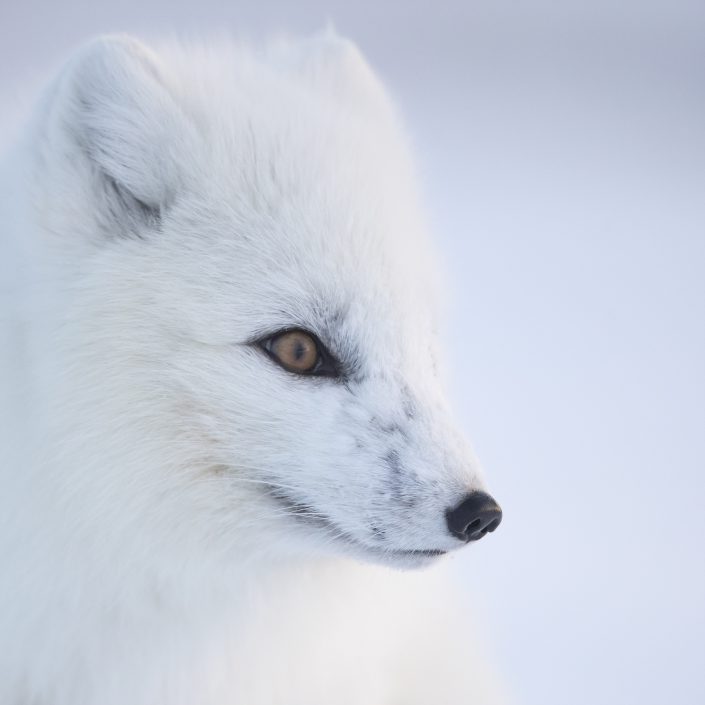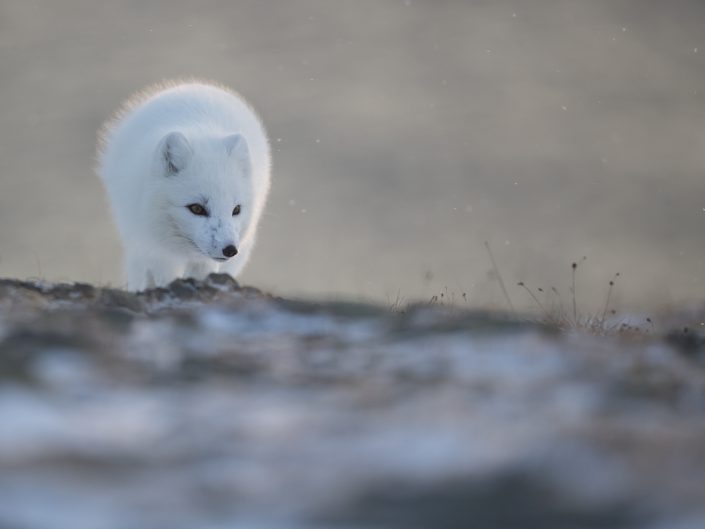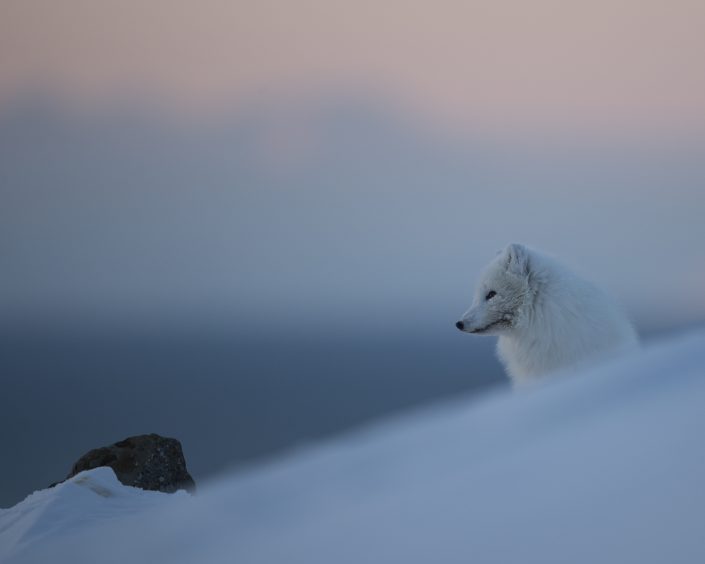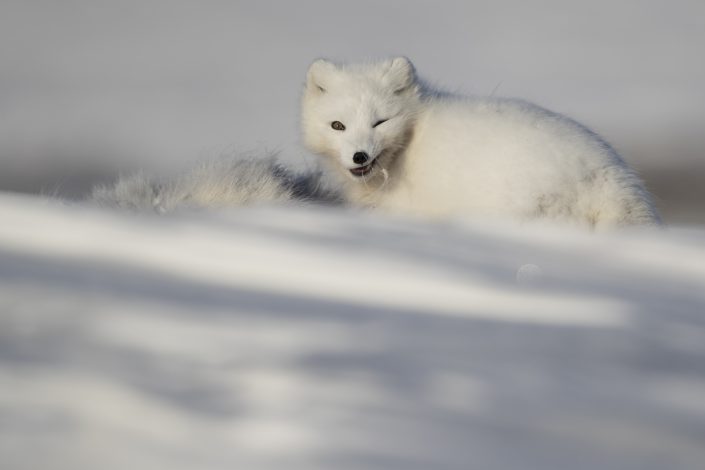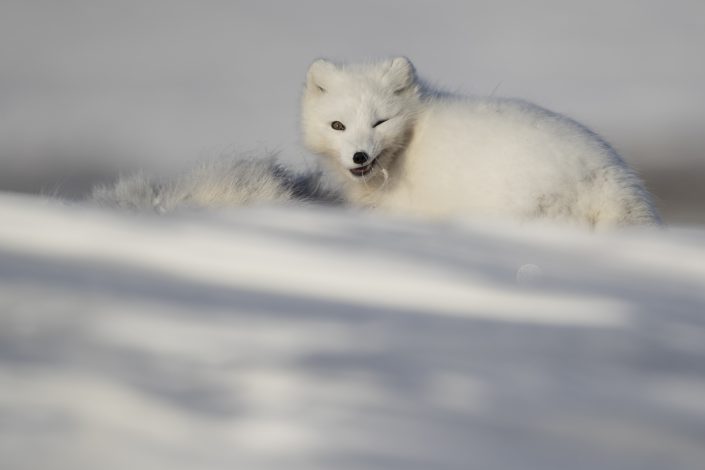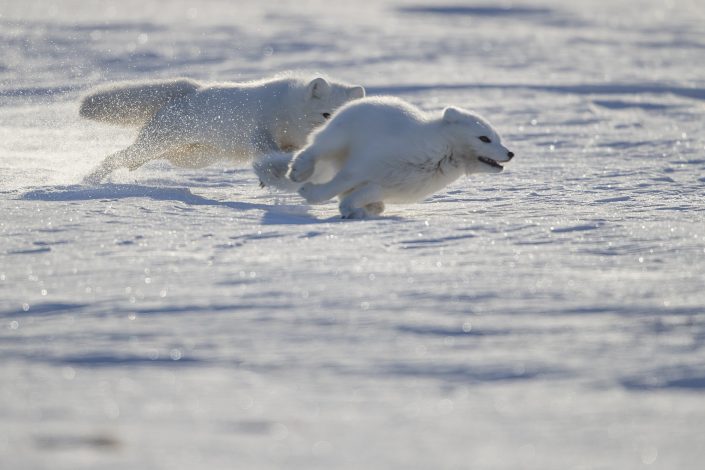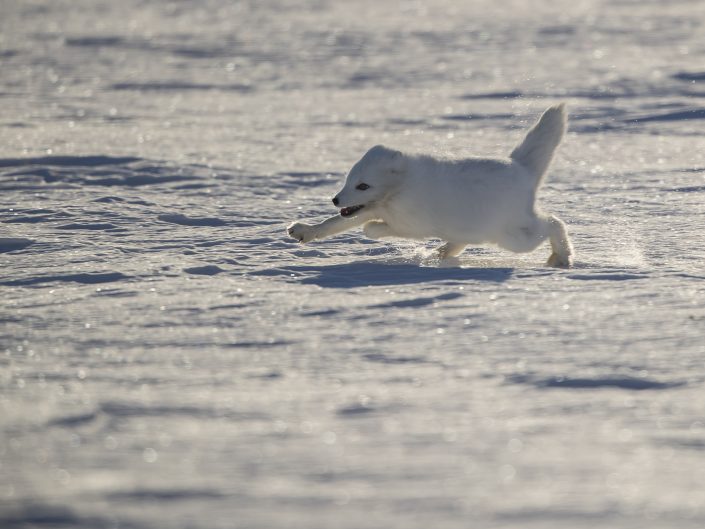This post is also available in: Swedish
Polarfox – Vulpes lagopus
Polarfox – Vulpes lagopus
Polarfox also known as the white fox, arctic fox, or snow fox, is a small fox native to the Arctic regions of the Northern Hemisphere and common throughout the Arctic tundra biome. It is well adapted to living in cold environments. It has a deep thick fur which is brown in summer and white in winter. Its body length ranges from 46 to 68 cm (18 to 27 in), with a generally rounded body shape to minimize the escape of body heat.
The Arctic fox preys on any small creatures such as: lemmings, voles, ringed seal pups, fish, waterfowl, and seabirds. It also eats carrion, berries, seaweed, insects, and other small invertebrates. Arctic foxes form monogamous pairs during the breeding season and they stay together to raise their young in complex underground dens. Occasionally, other family members may assist in raising their young.
The average head-and-body length of the male is 55 cm (22 in), with a range of 46 to 68 cm (18 to 27 in), while the female averages 52 cm (20 in) with a range of 41 to 55 cm (16 to 22 in). In some regions, no difference in size is seen between males and females. The tail is about 30 cm (12 in) long in both sexes. The height at the shoulder is 25 to 30 cm (9.8 to 11.8 in). On average males weigh 3.5 kg (7.7 lb), with a range of 3.2 to 9.4 kg (7.1 to 20.7 lb), while females average 2.9 kg (6.4 lb), with a range of 1.4 to 3.2 kg (3.1 to 7.1 lb).







